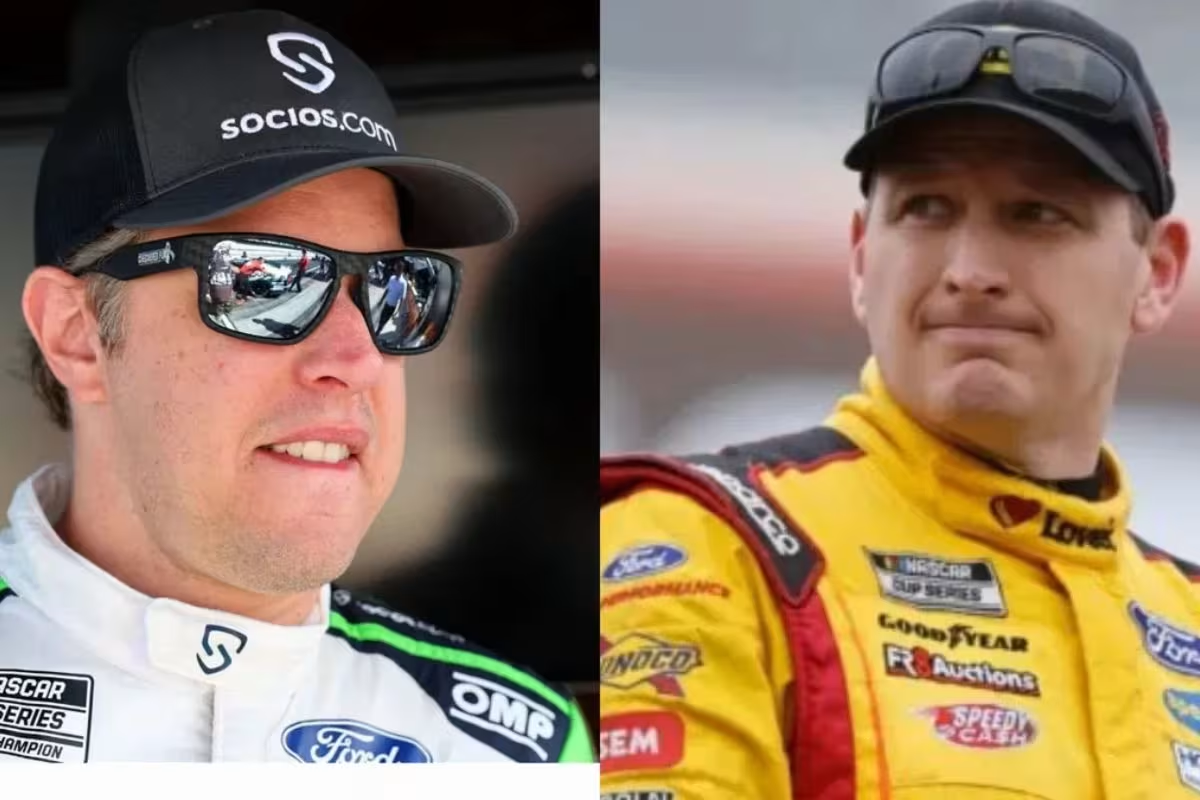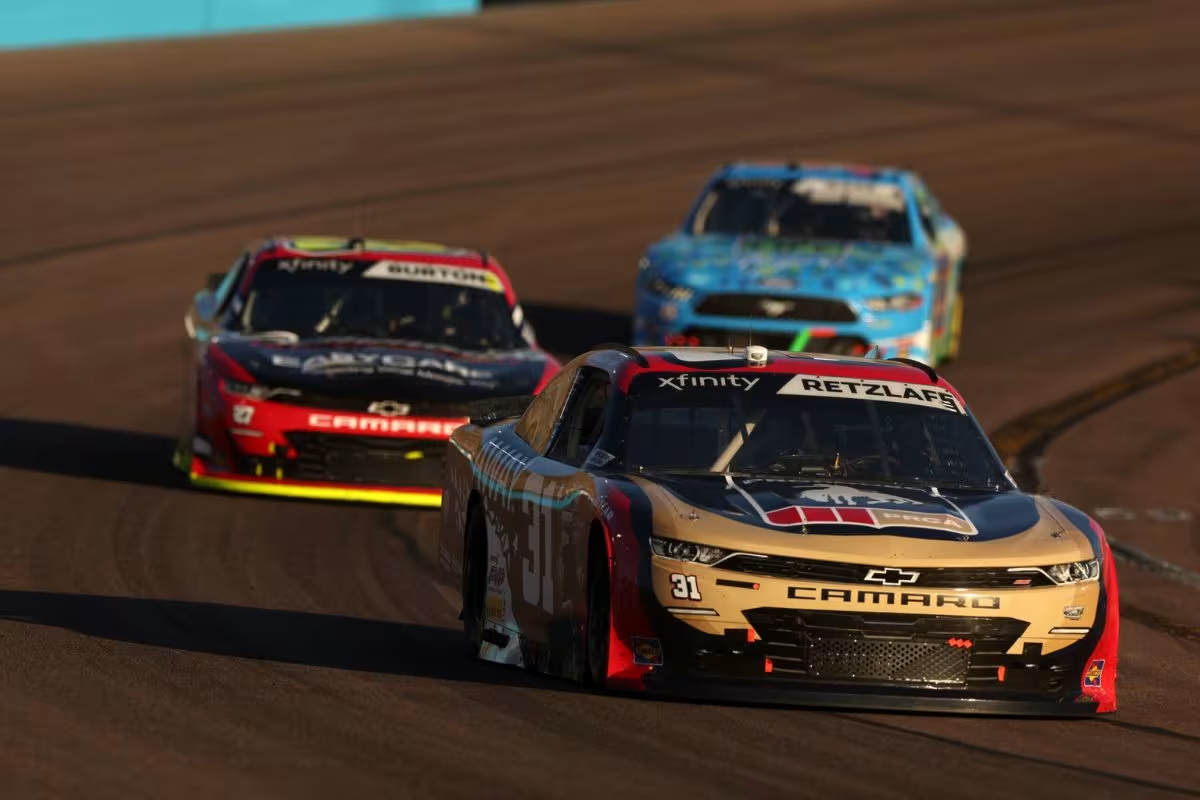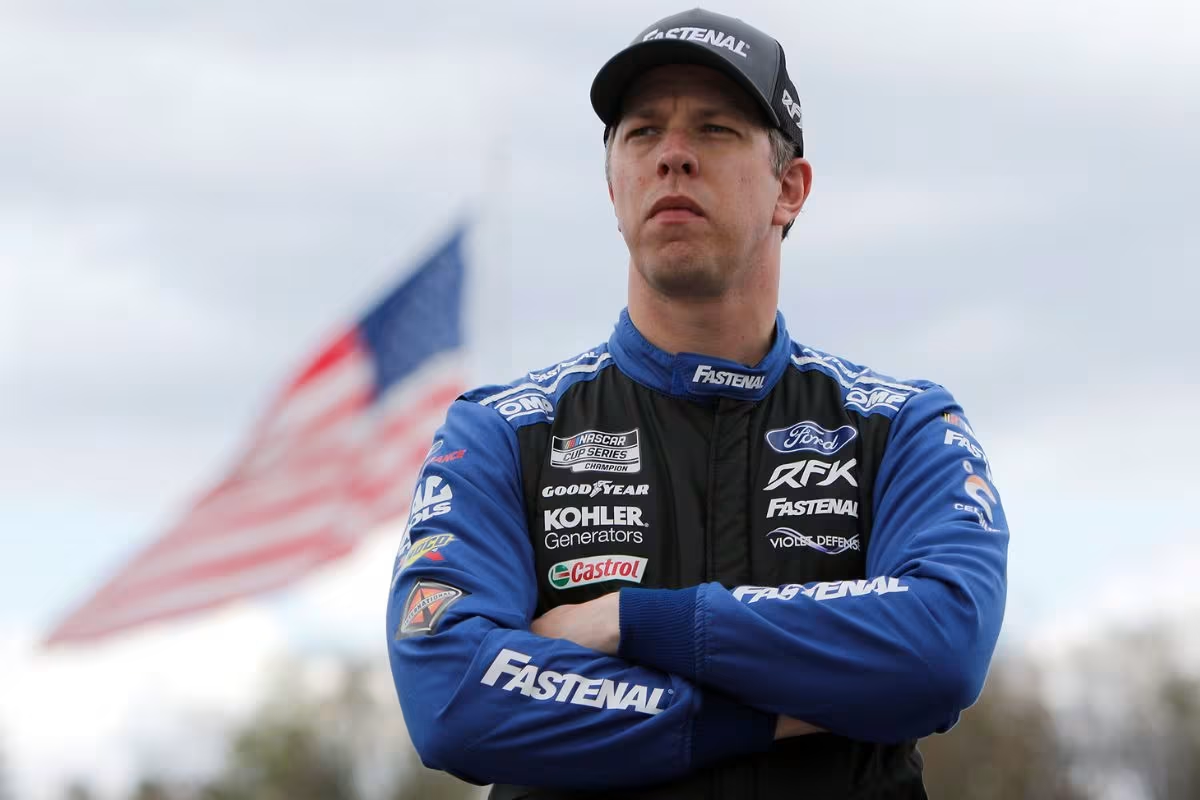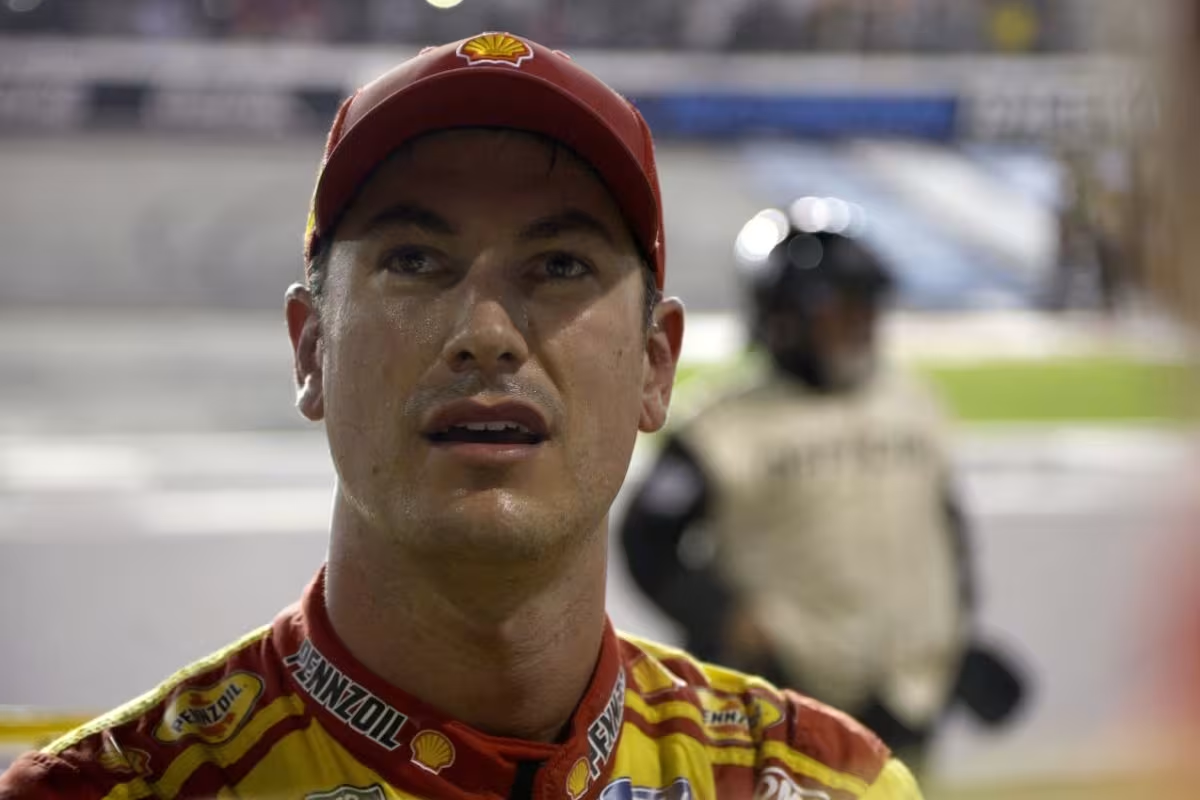Brad Keselowski’s Talladega Frustration: Brad Keselowski‘s emotions ran high after the YellaWood 500 at Talladega, as he pointed fingers at Michael McDowell and his teammate Todd Gilliland. What seemed like a day of teamwork among Ford drivers quickly turned into chaos and frustration. Keselowski’s comments reveal a tangled web of events that led to a massive crash, raising questions about what really happened on the track. Fans are left wondering: could better teamwork have changed the outcome of the race?
Key Highlights
- Brad Keselowski attributed the Talladega chaos to Michael McDowell’s actions, emphasizing the critical 0.006 seconds that determined the race outcome.
- He criticized Todd Gilliland for disrupting Ford drivers, highlighting how lapped cars can negatively impact pivotal race moments.
- Keselowski’s analysis of the race revealed a series of unfortunate events affecting eight playoff drivers, hindering his momentum.
- His remarks highlights the importance of split-second decisions and lane discipline in the unpredictable environment of NASCAR racing.
- The incident serves as a reminder of the delicate balance between aggression and control necessary for successful race strategies.
Ford Teams Shine as OEM Alliances Resurface
Often, the resurgence of OEM alliances in motorsports highlights the tactical maneuvers teams employ to improve their competitive edge. In the high-stakes environment of NASCAR, the rekindling of these alliances has proven crucial for teams seeking to optimize performance and secure victories. Ford’s collaboration at Talladega exemplified this strategy, as drivers united to launch a formidable collective push for the win.
In April, the Toyota team had already showed the advantages of such partnerships by propelling Tyler Reddick to Victory Lane. Come October, it was Ford’s turn to utilize their alliances, culminating in a rally that emphasized their commitment to a shared goal.
Brad Keselowski’s participation with RFK Racing exemplified the importance of these collaborations, even as he faced the disappointment of an early playoff exit. His involvement was pivotal in securing a solid finish, highlighting the significance of teamwork in maneuvering the complexities of racing strategy.
However, the dynamics within the Ford camp were not devoid of tension. Keselowski’s mixed feelings toward his fellow competitors demonstrate the intricate balance between collaboration and rivalry inherent in motorsports.
The race’s climax, marked by a dramatic wreck, not only reshaped the narrative of the event but also served as a poignant reminder of the thin margins that define success in racing. As OEM alliances continue to resurface, their implications for strategy and performance will certainly shape the future of competitive racing.
Keselowski Points Fingers at McDowell’s Teammate
The dynamics of teamwork in racing can quickly shift from collaboration to conflict, as evidenced by Brad Keselowski’s post-race remarks regarding the YellaWood 500 at Talladega. Following the chaotic finale of the event, Keselowski expressed frustration not only with Michael McDowell but also with McDowell’s teammate, Todd Gilliland.
Keselowski highlighted how Gilliland’s actions as a lapped car disrupted the synergy among the Ford drivers, ultimately contributing to the massive crash that marred the race’s conclusion.
In his analysis, Keselowski articulated the sequence of events that led to the wreck, emphasizing the vital moments that unraveled the tight-knit Ford game plan. He described the chaotic dynamics as “stretched rubber bands,” a metaphor illustrating the fragility of the situation as the Fords attempted to navigate around Gilliland’s unexpected blocking maneuver.
“The Fords had the entire bottom lane, Bob. The Chevys had the middle lane.”
“Something happened to the 38 car when we were lapping him. And he stayed in the bottom lane and blocked it. When he blocked the bottom lane with all the Fords in it, it caused us all to react. We stretched it – six rubber bands – we were stretched rubber bands and snapped back down the backstretch.”- Keselowski
Brad Keselowski on the final laps and the big wreck prior to it: pic.twitter.com/xkkxRi8tLZ
— Bob Pockrass (@bobpockrass) October 6, 2024
Keselowski on the Chaotic End to the Race
Amidst the turmoil of the YellaWood 500, Brad Keselowski offered a reflective analysis of the chaotic end to the race, revealing the intricate interplay of tactics and misfortune that defined the final laps.
As the race approached its climax, Keselowski found himself embroiled in a series of unfortunate events that not only derailed his victory but also emphasized the high stakes involved in NASCAR racing.
Keselowski recounted a pivotal moment that encapsulated the frenetic nature of the finale: “I caught the 2 car – checked up a little bit. The 22 came and hit me and then all three of us kind of ran into each other. Just the end of the race deal there.”
This collision, involving eight of the twelve playoff drivers, proved detrimental to Keselowski’s chances, as he struggled to regain momentum amid the chaos. The thin 0.006-interval margin that separated him from victory highlighted the cruel irony of racing—where split-instant decisions can yield vastly different outcomes.
He lamented the impact of the wreck, stating, “Unfortunately, the wreck on the backstretch really dampened out all those things.”
“So wanted to get a really good push from the five, I did…just wasn’t quite enough.” – Keselowski
The desire for a tactical push from his ally, the No. 5 car, ultimately fell short, revealing the fragility of teamwork in high-pressure scenarios. In the aftermath, even fellow competitor Joey Logano refrained from placing blame, recognizing the delicate nature of racing dynamics.
Logano’s Struggles Continue After Atlanta Win
Struggling to regain momentum after his Atlanta triumph, Joey Logano faced a harrowing setback at Talladega Superspeedway that exacerbated his challenges in the postseason. The unpredictable nature of the famed track proved detrimental for Logano and his No. 22 team, who found themselves ensnared in the race’s most notable crash.
As the playoffs approached, Logano’s performance spiraled downward, leaving him with mounting concerns about his competitive viability.
Despite his earlier victory in Atlanta, Logano’s subsequent results have been sharply disappointing:
- Finished outside the top-15 in multiple races since Atlanta.
- Caught in a major incident that saw the field decimated.
- Currently positioned below the playoff cut line, raising alarms.
- Faces an ever-increasing need for redemption in upcoming events.
The race at Talladega, characterized by its chaotic energy, highlighted the inherent risks of superspeedway racing. Logano’s unfortunate involvement in the crash, instigated by Austin Cindric’s erratic maneuvering, has left him questioning both strategy and execution.
While he, like fellow Ford teammate Brad Keselowski, avoided placing blame on others, the results speak volumes about the uncertainty of his playoff aspirations.
Logano’s Perspective on Late-Race Aggression
Late-race aggression is a defining feature of NASCAR, and Joey Logano‘s recent reflections highlight the complexities this intensity brings to superspeedway racing. As he articulated after the chaotic finish at Talladega, the final laps of a race are characterized by an escalation in assertiveness among drivers, a phenomenon rooted in both the competitive nature of the sport and the unique dynamics of restrictor-plate racing.
“Everyone just gets more aggressive at the end of the races.” – Logano
Logano pointed out that the aggression often manifests as a chain reaction, where one driver’s actions can profoundly impact others on the track. His experience with the No. 2 car, driven by Brad Keselowski, exemplified this; a push from the No. 21 car led to an unforeseen encounter with the No. 6. This sequence highlights the inherent unpredictability of superspeedway racing, where visibility is compromised and split-second decisions reign supreme.
“The No. 2 got out there a little bit more than what he has been. The No. 21 gave me a shove, and I transferred that to the No. 6. You can’t see what’s in front of you from there. He got to the No. 2 with a fair amount of steam; it’s nobody’s fault, it’s not Brad’s fault, it’s not anybody’s fault. It’s the product of the races we’ve got. Everyone gets more and more aggressive as the laps wind down. It happens; it happens a lot.” – Logano
Critically, Logano emphasized that this surge in aggression is not a failure of individual drivers but rather a byproduct of the racing environment. With stakes high and time running out, drivers instinctively boost their intensity, leading to heightened risks and, at times, chaos.
News in Brief: Brad Keselowski’s Talladega Frustration
The recent Talladega race exemplifies the unpredictable nature of motorsport, where mere fractions of moments can dictate outcomes. Brad Keselowski’s assertion regarding Michael McDowell highlights the intense rivalries and tactical complexities inherent in racing. As Ford teams continue to navigate OEM alliances, the dynamics among drivers, particularly in high-stakes situations, become increasingly critical. The episode emphasizes the significance of teamwork and reflects the broader challenges faced in maintaining competitiveness during chaotic race conditions.
ALSO READ: Can NASCAR Survive the Upcoming Clash? Brad Keselowski’s Plea for Unity!




